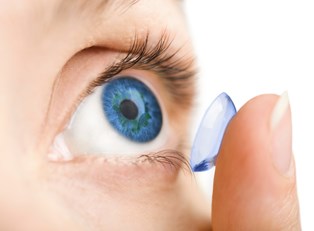Lens prescriptions for glasses and contacts are primarily intended for use by eye doctors, which means that they can be quite confusing for the average patient. Fortunately, understanding a prescription is actually not as difficult as it might seem at first. With a little knowledge of the technical terms used and how lens power is measured, you’ll be reading prescriptions for glasses and contacts like a pro in no time.
Terms to Know
There are three Latin terms that are important to understanding a lens prescription for glasses or contacts: oculus dexter, oculus sinister, and oculus uterque. These words refer to the right eye, left eye, and both eyes respectively. It’s common to see them abbreviated as OD, OS, and OU as well.
On a prescription you will see oculus dexter (right eye) listed before oculus sinister (left eye), which may seem counterintuitive at first, since we normally think in terms of left to right. However, eye doctors use this order since they see the right eye first when examining a patient.
In addition to the Latin terms, there are several other important words to understand when reading a prescription. These are sphere (abbreviated SPH), cylinder (abbreviated CYL), axis, and prism. Sphere refers to how powerful your lenses must be in order to correct your vision, and this is measured in units known as diopters. Cylinder is only used if a patient is suffering from astigmatism and is measured in diopters as well. Axis is another astigmatism-related word that refers to the severity and direction of the condition. Finally, prism refers to the amount of power needed to correct eye-alignment problems—although most prescriptions will not contain this figure.
Positive and Negative Numbers
Figures for sphere and cylinder are expressed as either positive (+) or negative (-) numbers. When a positive number is used, this indicates that a patient is farsighted, while a negative number indicates nearsightedness. Sometimes doctors will use a number without a positive sign to indicate farsightedness.
Differences Between Glasses and Contacts Prescriptions
A prescription for glasses is not exactly the same as one for contacts, because the contacts prescription requires more information. In addition to sphere, cylinder, axis, and prism numbers, it will also specify the surface curve needed for the lens, the diameter of the contact, and the specific manufacturer and brand of contact to be used.



